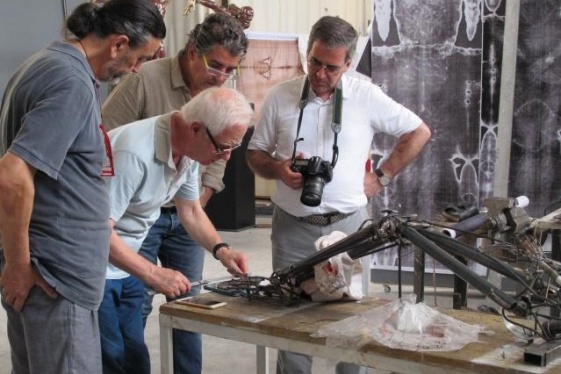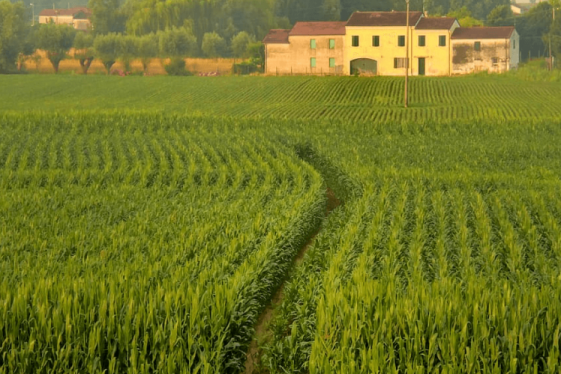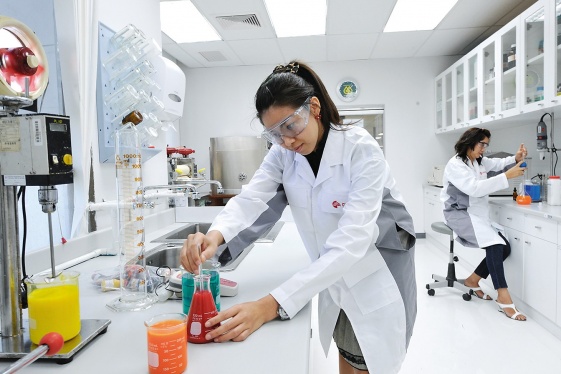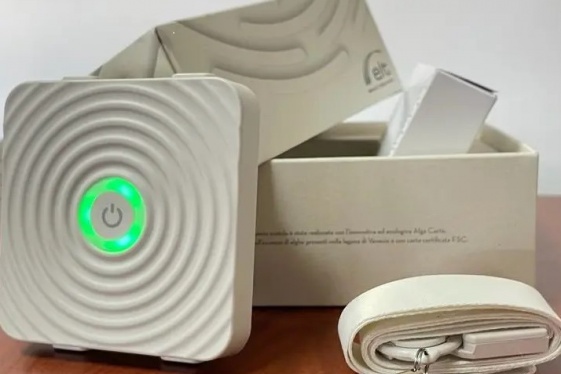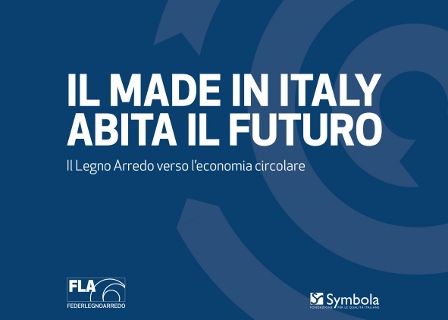

WTI Magazine #78 2016 April 15
Author : Symbola + Federlegno Translation by:
Beside the analysis of the numbers, the search "Made in Italy lives the future" by FederlegnoArredo and Symbola Foundation has analyzed over 30 experiences of enterprise related to 10 key points regarding the circular economy: Eco-Design, Durability, Disassembly, Biomaterials and innovative materials, Renewable and certified materials, Recycled materials, Pollutants reduction, Energy efficiency, Reuse and upcycling, Environmental certifications. An insight of the wealth of Italian industry that enables to better describe the cultural approach to the production and the issue of sustainability, aspects that statistics do not entirely show.
Eco-design
The example of Scavolini is emblematic. The commitment to sustainability began with the environmental certifications, it integrated the themes of resource efficiency and renewable energy (for example via a photovoltaic system installed on the coverage of the establishments that guarantees the 90% of energy needs) and continues with an ongoing research on their materials and processes, in order to achieve better performance with lower environmental impacts.
Durability
One of the main drivers of the green competitiveness of Italian companies in the Wood Furniture is the durability of the products, which mainly lies in the design phase. We analyzed four case studies. Molteni & C is committed to producing furniture that grant quality and durability, ensuring more than 10 years, the availability of spare parts and of the main types of coating for its furnishings.
This is the same approach adopted by the kitchen manufacturer Dada which guarantees for 10 years the availability of the components, which is important when moving the kitchen from one house to another. Another case analyzed is Zanotta, for which quality and design go hand in hand. The philosophy of the company is to provide products that can retain intact the initial characteristics as long as possible. Poliform also takes great care in selecting the best materials focusing in parallel on their reliability and durability over time, as in the case of tempered safety glass, up to 5 times stronger than normal glass.
Disassembly
In recent years Valcucine has focused on disassembly and dematerialization: their research led to the creation of a kitchen designed using only shelves and baskets without the use of glues. The company also provides a lifetime warranty and the free withdrawal of the product at it's life end.
Biomaterials and innovative materials
Even in the sector of biomaterials and innovative materials the Italian companies begin to play a leading role, as in the case of the Lago company that uses a bio-polymer derived from castor oil for the realization of the seat latches of a sofa. Caimi Brevetti has been known for years for a particularly approach to design careful for environment issues, with products mainly manufactured from mono-textural units, easily recyclable.
Renewable materials and certified
The use of raw material from sustainable and certified wood is an unstoppable and inevitable process for the Wood Furniture industry. In this context, attention to the sustainability of production is one of the strengths of the Distretto della sedia in Udine who with the «Green District project» represents the first national FSC and PEFC certified process.
This sensitivity is also becoming popular in supermarkets as in the case of Leroy Merlin Italy that has pledged to provide by 2016 90% of products in tropical certified wood, in particular for garden furniture. To ensure that the phases of supply of the raw material complies with the requirements involved, the ConLegno activities in 2013 were recognized asd a monitoring institution for the implementation of the European Regulation on the legal origin of timber. ConLegno proposes to timber importing companies a due diligence system which ensures a proper management of supply. Finally, the company Zordan has developed a project of luxury furnishings with minimal environmental impact: entirely handmade, with raw material at zero kilometers, from local sawmills and carpenters.
Recycled materials
A key role in the circular economy is played by recycling, featuring the big industries of wood based panels.
Gruppo Saviola has specialized in the production of FSC certified 100% recycled wood panels used mainly in the furniture industry and with the lowest formaldehyde emission. Fantoni - leader in the production of MDF and wood shaving panels - fetches every year 200,000 tonnes of post-consumer wood and more than 300,000 from scraps of wood industry. Gruppo Frati, also active in the sector wood-based panels, recovers and turns around 1 million tons of post-consumer wood on the national territory, while Saib (another Italian excellence in recycling) ensures an annual collection of post-consumer wood of about 400,000 tons.
Also interesting are the cases of Kubedesign, which has decided to focus on furniture made of recycled realized through an innovative 3D technology that takes advantage of the ability to bend the cardboard, and Giovanardi which in recent years has invested in innovative solutions with low environmental impact in the segment of technical fabric with exceptional results: water consumption -58%, consumption of raw material -83%, emissions of harmful substances -51%.
Then there are the fundamental activities of Rilegno (Consortium Recycling of Wood Packaging, part of the CONAI System) that collects and sends to recycle over 700,000 tons of wood packaging and more than 800,000 tons of wood waste per year.
Reducing pollutants
To make eco-friendly products we also have the participation of choices made during the production, such as working the raw materials with no pollutants. Moretti Compact, specialized in the production of children's rooms, has focused on the use of very low emission formaldehyde panels (made from 100% post-consumer wood material Fsc certificate) and of water-based coatings which reduce the emission of harmful substances up to 95%.
Also Passoni Natura has focused on naturalness through the use of solid wood, minimizing the use of adhesives while anyway totally non-toxic and free of harmful emissions. Active in the biocompatible wooden flooring industry, Fiemme 3000 has perfected a treatment consisting of a mixture of more than 50 vegetable and mineral substances (bee waxes, resins and balsamic oils) that provides protection equal to that of conventional paints.
In the textile sector, Gruppo Industriale Parà has aimed at drastically reducing the formaldehyde content in its products by ensuring much lower values than those required by law.
Energy efficiency
The improvement of the efficiency of the industrial equipment can also be done with simple measures, such as the application of an inverter which acts on the speed of electric motors driving the most diverse adapting equipment in real time to the actual functional requirements.
This is the system adopted by Porro: following an energy audit carried out in collaboration with Esco Heat & Power and FederlegnoArredo in less than two years it has finished paying the project and has now a far more efficient system. Solar energy, however, is used to power the Rimadesio production facilities that from 2011 has achieved the goal of producing a quantity of energy higher than its needs, so being able to enter on the public network of teh energy market.
High-efficiency motors, constant monitoring of consumption of each machine, photovoltaic panels on the roofs of the company are the interventions that allows Snaidero to bring down the CO2 emission.
Sistem Costruzioni produces wooden buildings made of plywood panels made of solid wood whose small size helps the handling and the assembly operations. Natural light and ventilation help reduce energy consumption, improve indoor environmental quality and limit the impact of buildings. Velux, finally, has focused on products designed to ensure, through a system of sensors and automated mechanisms of adjustment of the various devices, the ability to independently optimize the illumination, natural ventilation, heat protection and energy consumption.
Reuse and upcycling
Reconfigure and reuse of complex products is the watchword of Moretti Interholz that on the occasion of Expo 2015 has realized the pavilion of the Principality of Monaco using a laminated wood structure to which freight containers have been added. At the end of the Expo the pavilion was dismantled and reassembled in a training center set up by the Red Cross in Africa. Expo has also seen protagonist Galloppini that by using a traditional Japanese technique realized the incredible structure of the Japanese pavilion made by 20,000 pieces of wood.
The reuse of products at end of life in a different logic responds well to the principles of circular economy. This is what does Stipa, a company active in the field of exhibitions and always sensitive to issues related to the environment, which has made arrangements with recycled pallets that have become sofas, armchairs and scenic elements.
Environmental certifications
With the goal of optimizing and certifying what previously described, there is a great deal of environmental and sustainability certification schemes regarding furniture, so many to produce more confusion than certainty and to make comparisons and choices difficult. Thus emerged the need for a model clear and shared by the most sensitive industries to environmental issues, which may be a reference recognized globally. In this context Assufficio of Federlegnoarredo, as part of Femb European federation, has decided to promote a voluntary certification model specifically designed for the furniture industry. Arper is committed on the production of environmental declarations (EPD): for some of its collections of furniture-office Arper obtained the EPD and GreenGuard certification for all seats.
Finally, the kitchen manufacturer Ernestomeda got the recognition "Indoor Hi-Quality", signifying the compliance with the LEED requirement of its indoor pollution.
You may be interested
-
'Pop' and 'Rock' trains to bring free Wi-fi t...
The Italian rail infrastructure administrator Ferrovie dello Stato Italiane has unveiled i...
-
'The Precise Image of What Jesus Looked Like'...
One of the most-well known relics in archeological history is leading researchers to belie...
-
'Time travel' at Caracalla with 3D marbles,st...
Thanks to a new 3D visor, visitors to Caracalla's Baths in Rome have been restored to thei...
-
‘A crucial turning point’ — Italian researche...
Italian agriculture could be close to a turning point, thanks to genetic engineering. This...
-
‘Ritratti di Donne 2 – Science’ for the Itali...
In 2021 italiana.esteri.it launched an ambitious project: Ritratti di donne, a gallery of...
-
‘We don’t need another Michelangelo’: in Ital...
For centuries, the massive marble quarries above the Tuscan city of Carrara have provided...
-
"Caffè scientifico" : Research and Society -...
When: Friday, April 26, 2019 from 7:00 PM to 9:00 PM Where: Italian Cultural Institute | 5...
-
"E4Shield," the Italian device that stops Cov...
An innovative tool capable of ferreting out the circulation in the air not only of the ori...




